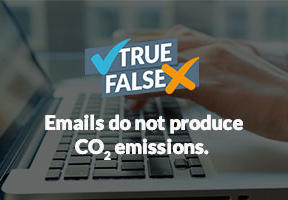Reducing Vehicle Fuel Consumption
10 min read
To cut carbon emissions and lessen reliance on petroleum-based fuels, vehicle consumption needs to be reduced. In addition to public policies and changes in consumer behavior, several avenues are available to carmakers themselves to achieve this objective.

© AFP PHOTO / JACK GUEZ. - Aerodynamic testing using a smoke wand in a wind tunnel near Paris, France.
The European Union (E.U.) is leading the way in terms of regulations designed to reduce the impact of road transportation. New vehicles are not covered by strict carbon emissions standards in the same way as for other pollutant emissions, but carmakers are expected to meet specific targets or be subjected to an additional tax.
As a result, average carbon emissions from new cars in Europe have fallen by 50 grams of CO2 per kilometer over the last 15 years. The E.U.’s initial target was to bring down average carbon emissions to no more than 130 grams per kilometer for new passenger vehicles by 2015. It has since set a new target for 2020 of 95 grams per kilometer for the same vehicle class, and 147 grams per kilometer for light commercial vehicles.
In 2016, carbon emissions for new vehicles sold in nine European countries already averaged less than 120 grams of CO2 per kilometer. In France, for example, carbon emissions from new passenger vehicles declined to 110 grams per kilometer in 2016 from 114 grams in 2014. In Germany, they stood at 126 grams in 2016 compared with 132 grams two years earlier1.
The targets set by the E.U. apply to the average emissions from all of the vehicles produced by a single carmaker, meaning that small cars and electric vehicles can offset the higher emissions from larger models. Of course, a vehicle’s carbon emissions rate varies according to the type of fuel that it uses and how much, with 95 grams of CO2 per kilometer corresponding to 4.1 liters of fuel per 100 kilometers for gasoline engines and 3.6 liters per 100 kilometers for engines.
Multiple Factors
The engine is not the only pathway to improvement. In fact, vehicle fuel consumption depends on several factors2:
- Weight: Vehicle weight reduction is a key way to reduce carbon emissions. It is achieved by using reinforced plastic and innovative resins for interior trim and composite materials for the seats, dashboards and non-safety-related body parts. The use of very-high-performance metals for the chassis and ultra-thin glass for the windows also helps to reduce vehicle weight. Carmakers are aiming for a 400-kilogram weight reduction per vehicle, to bring their mid-range models under one ton.
- Aerodynamics: Improving drag by 25% can lower fuel consumption by more than a liter per 100 kilometers. The overall shape of the vehicle is important, but many smaller details also play a role. Potential improvements include replacing external side mirrors with cameras and adjusting the exhaust system to limit air turbulence behind the vehicle.
- Wheels: Taller, narrower wheels reduce both air turbulence on the side of the vehicle and friction between the wheels and the road. Tire manufacturers are conducting extensive research into the contact patch — the area where the tire meets the road.
- Friction in the engine and other mechanical components: Ultra-low-viscosity, high-resistance oils, like those used in Formula One racing, facilitate cold starts and cover the pistons with a permanent film of oil that can withstand very high temperatures. Nanotechnologies are being used in new-generation transmission fluids and wheel bearing greases.
Improving Vehicle Engines and Fuels
Conducted continuously for several decades, R&D on engines primarily focuses on improving their thermal efficiency — the ratio between output and fuel energy input — and reducing their size.
Two key innovations are direct technology and engine downsizing:
- Direct injection technology delivers fuel directly into the combustion chamber under high pressure, bringing the efficiency of gasoline engines closer to that of diesel engines and reducing fuel consumption by 10 to 15%. Unfortunately, it remains a costly technology and requires sophisticated electronics.
- Engine downsizing means reducing engine size while maintaining the same level of power, thanks to one or more turbochargers and direct injection technology. Downsizing reduces engine weight and bulk and has resulted in overall fuel savings of around 20 to 25%.
Other avenues for reducing fuel consumption and therefore carbon emissions include the use of new powertrains, such as electric hybrids, and the development of more efficient fuels.
Sources:
(1) See the “Car Labelling” website - ADEME (in French only)




















